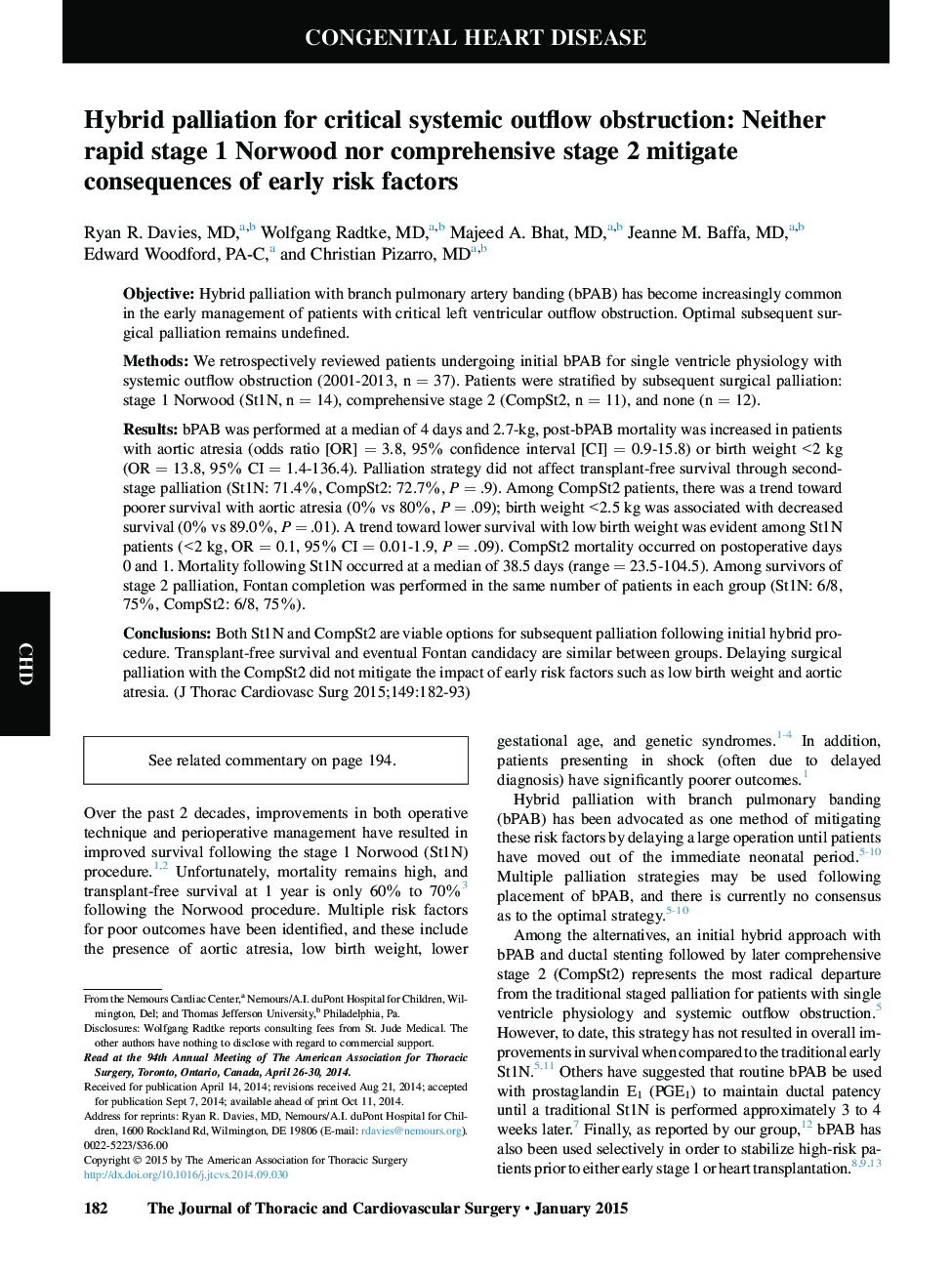| کد مقاله | کد نشریه | سال انتشار | مقاله انگلیسی | نسخه تمام متن |
|---|---|---|---|---|
| 2980061 | 1578603 | 2015 | 12 صفحه PDF | دانلود رایگان |

ObjectiveHybrid palliation with branch pulmonary artery banding (bPAB) has become increasingly common in the early management of patients with critical left ventricular outflow obstruction. Optimal subsequent surgical palliation remains undefined.MethodsWe retrospectively reviewed patients undergoing initial bPAB for single ventricle physiology with systemic outflow obstruction (2001-2013, n = 37). Patients were stratified by subsequent surgical palliation: stage 1 Norwood (St1N, n = 14), comprehensive stage 2 (CompSt2, n = 11), and none (n = 12).ResultsbPAB was performed at a median of 4 days and 2.7-kg, post-bPAB mortality was increased in patients with aortic atresia (odds ratio [OR] = 3.8, 95% confidence interval [CI] = 0.9-15.8) or birth weight <2 kg (OR = 13.8, 95% CI = 1.4-136.4). Palliation strategy did not affect transplant-free survival through second-stage palliation (St1N: 71.4%, CompSt2: 72.7%, P = .9). Among CompSt2 patients, there was a trend toward poorer survival with aortic atresia (0% vs 80%, P = .09); birth weight <2.5 kg was associated with decreased survival (0% vs 89.0%, P = .01). A trend toward lower survival with low birth weight was evident among St1N patients (<2 kg, OR = 0.1, 95% CI = 0.01-1.9, P = .09). CompSt2 mortality occurred on postoperative days 0 and 1. Mortality following St1N occurred at a median of 38.5 days (range = 23.5-104.5). Among survivors of stage 2 palliation, Fontan completion was performed in the same number of patients in each group (St1N: 6/8, 75%, CompSt2: 6/8, 75%).ConclusionsBoth St1N and CompSt2 are viable options for subsequent palliation following initial hybrid procedure. Transplant-free survival and eventual Fontan candidacy are similar between groups. Delaying surgical palliation with the CompSt2 did not mitigate the impact of early risk factors such as low birth weight and aortic atresia.
Journal: The Journal of Thoracic and Cardiovascular Surgery - Volume 149, Issue 1, January 2015, Pages 182–193